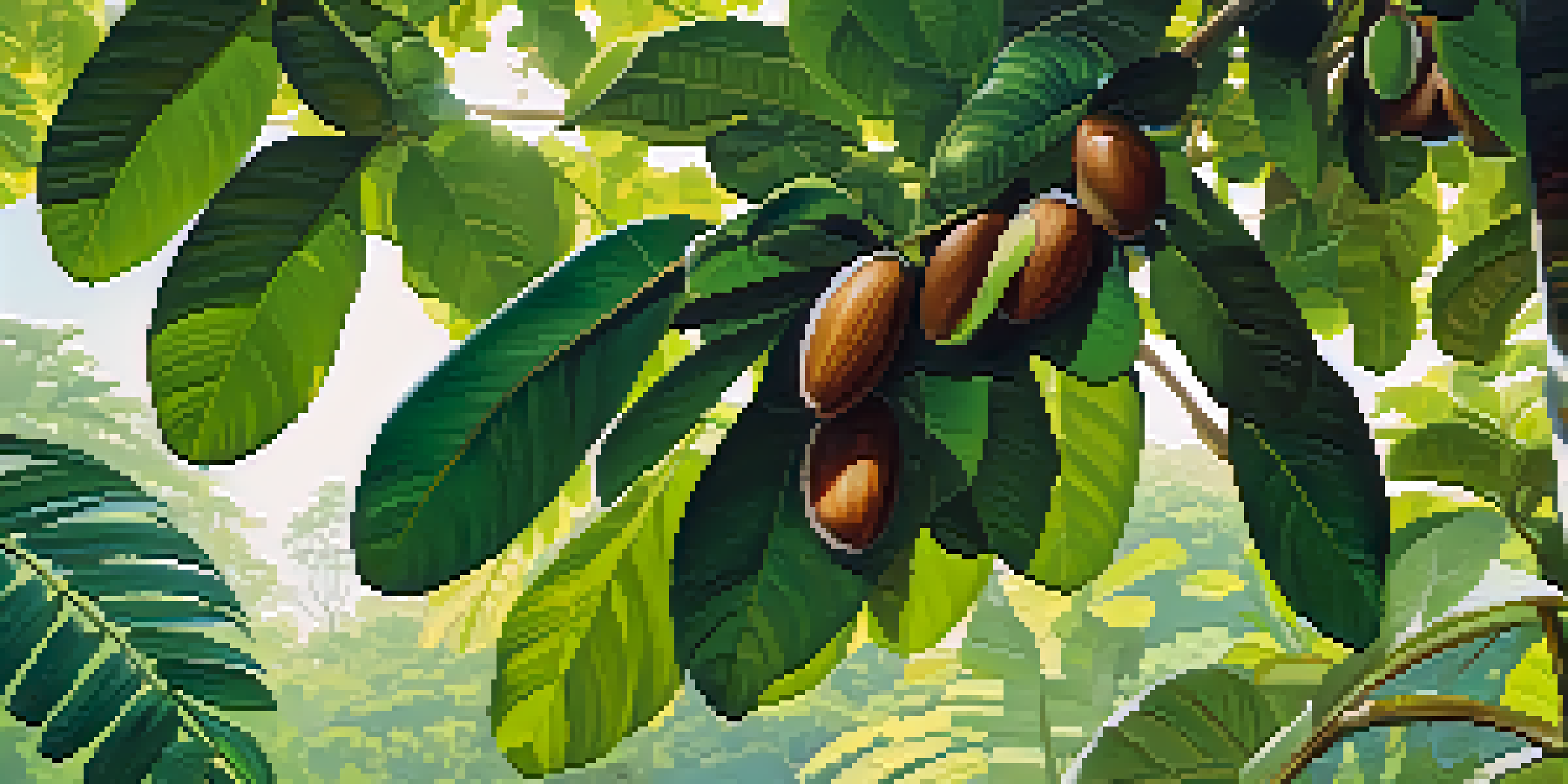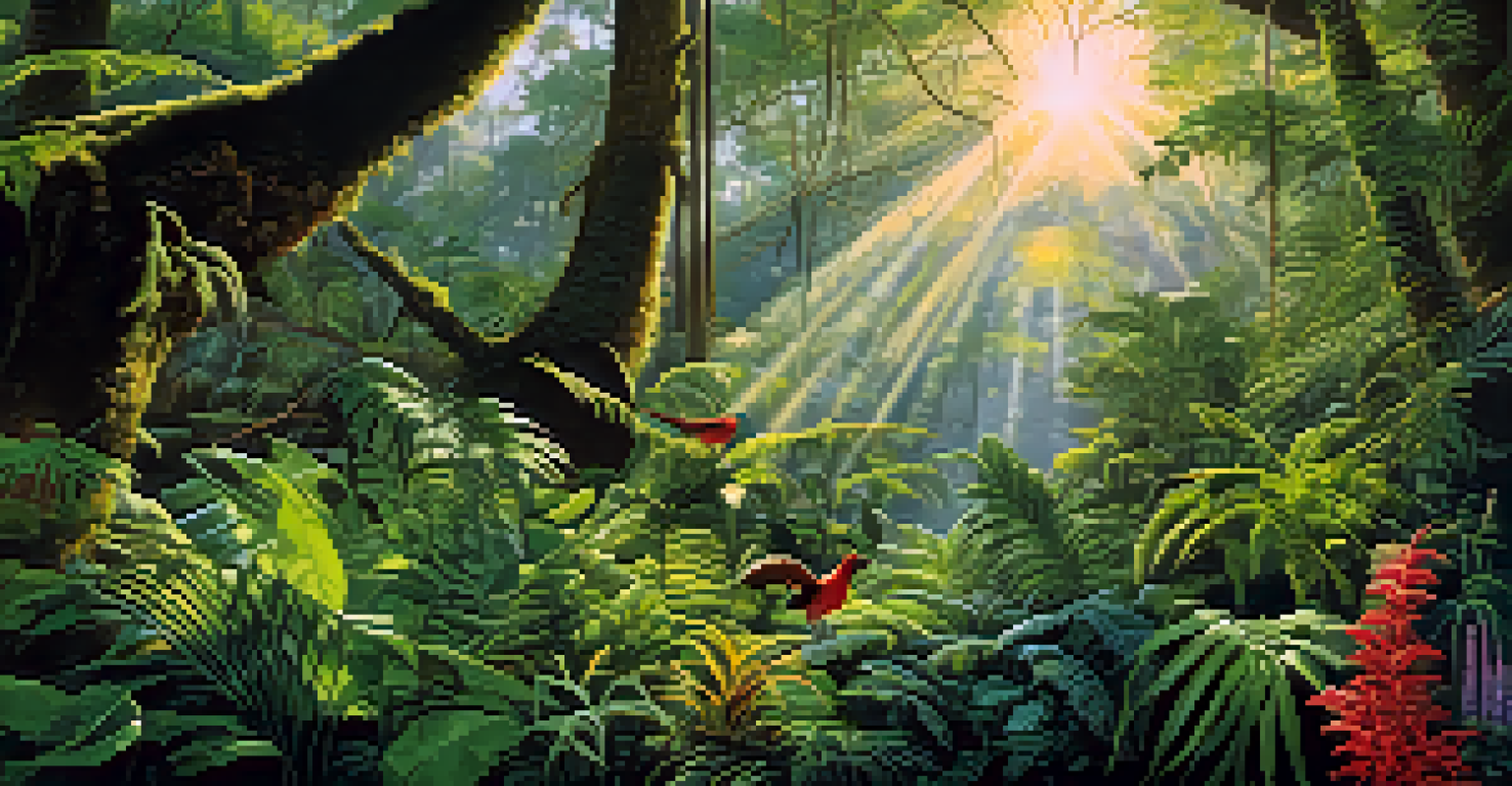Unique Plant Species: Brazil's Endemic Flora Explained

Introduction to Brazil's Endemic Flora and Why It Matters
Brazil is home to an astonishing variety of plant species, many of which can be found nowhere else on Earth. This unique biodiversity is largely due to the country's diverse ecosystems, ranging from the Amazon rainforest to the arid caatinga. Understanding Brazil's endemic flora is crucial, not just for conservation efforts, but also for appreciating the intricate web of life that these plants support.
Biodiversity is the most powerful tool we have to fight climate change and protect our planet's ecosystems.
Endemic species are those that are native to a specific location and are often highly specialized to thrive in their unique environments. Brazil's isolation and varied climates have fostered the evolution of these plants, making them an essential part of the global biodiversity picture. By focusing on Brazil's endemic species, we gain insights into ecological balance and the importance of preserving these natural treasures.
In this article, we will delve into some of Brazil's most fascinating endemic plant species, exploring their characteristics, habitats, and the roles they play in their ecosystems. From the lush Amazon to the unique landscapes of the cerrado, each plant tells a story of adaptation and survival, highlighting the beauty and complexity of nature.
The Amazon Rainforest: A Treasure Trove of Endemic Plants
The Amazon Rainforest is often referred to as the lungs of the planet, and for good reason. This vast ecosystem is not only vital for our climate but also houses a staggering number of endemic plant species. For example, the famous Brazil nut tree (Bertholletia excelsa) is not just a source of delicious nuts but also plays a critical role in its habitat by supporting various wildlife.

Among the incredible diversity of the Amazon, you can find unique orchids, towering kapok trees, and vibrant bromeliads. These plants have adapted over millennia to thrive in the dense, humid environment of the rainforest, showcasing stunning variations in shape, size, and color. Their unique adaptations often allow them to compete for sunlight and nutrients in a highly competitive landscape.
Brazil's Unique Plant Diversity
Brazil's endemic flora showcases an extraordinary range of plant species that are crucial for ecological balance and biodiversity.
Preserving the Amazon's endemic flora is vital not only for its ecological integrity but also for indigenous communities that rely on these plants for food, medicine, and cultural practices. As we explore the Amazon's plant life, it's essential to recognize the interconnectedness of all living things and the importance of protecting this irreplaceable ecosystem.
Cerrado: Brazil's Savanna and Its Unique Plant Life
Moving away from the lush Amazon, we find ourselves in the cerrado, Brazil's vast tropical savanna. This region may seem less lush at first glance, but it boasts a rich variety of endemic plant species that have adapted to its unique conditions. From fire-resistant grasses to drought-tolerant trees, the cerrado showcases nature's resilience and ingenuity.
The greatest threat to our planet is the belief that someone else will save it.
One standout species is the pequi tree (Caryocar brasiliense), known for its spiky fruit that is a culinary delight for both locals and wildlife. The tree's adaptations allow it to thrive in nutrient-poor soils and withstand seasonal droughts, making it a vital part of the cerrado ecosystem. Additionally, many plant species here have evolved to rely on fire as a natural part of their life cycle, using it to clear out competition and promote growth.
The cerrado is also one of the most threatened ecosystems in Brazil, facing challenges from agriculture and urbanization. Understanding and protecting its unique plant species is crucial for maintaining the ecological balance and the myriad of animal species that depend on these plants for survival. By appreciating the cerrado's flora, we can foster a deeper connection to this remarkable landscape.
Atlantic Forest: A Hub for Endemic and Medicinal Plants
The Atlantic Forest, once covering a vast stretch of Brazil's coastline, is another hotspot for endemic plant species. Despite significant deforestation, this diverse ecosystem remains a sanctuary for unique flora, many of which are used in traditional medicine. For instance, the juçara palm (Euterpe edulis) is not only vital for maintaining the forest's structure but also produces heart-of-palm, a popular delicacy.
Endemic plants in the Atlantic Forest have adapted to its humid climate and varied altitudes, resulting in a range of species from towering trees to delicate ferns. The forest is known for its rich biodiversity, housing thousands of species, many of which are still being studied for their medicinal properties. These plants play a critical role in local cultures and health practices, offering natural remedies that have been passed down through generations.
Threats to Endemic Plants
Habitat destruction, climate change, and illegal trade pose significant threats to Brazil's endemic plant species, highlighting the need for immediate conservation efforts.
However, the Atlantic Forest is under severe threat from urbanization and agriculture. Conservation efforts are crucial to protect these unique plant species and their habitats. By raising awareness about the importance of the Atlantic Forest's endemic flora, we can inspire others to take action to preserve this vital ecosystem for future generations.
The Role of Endemic Plants in Ecosystem Health
Endemic plants play a fundamental role in maintaining the health of their ecosystems. They provide food and habitat for various wildlife, contributing to biodiversity and ecological stability. For example, native flowering plants attract pollinators like bees and butterflies, which are essential for the reproduction of many plant species, including crops we rely on for food.
Moreover, these plants often have specialized adaptations that allow them to thrive in their unique environments, helping to stabilize soil, retain water, and regulate local climates. The loss of endemic species can lead to a cascade of negative effects, disrupting these crucial ecological processes and threatening the survival of other species.
By protecting endemic plants, we are not only conserving biodiversity but also safeguarding the health of the ecosystems they inhabit. This interconnectedness highlights the importance of conservation efforts focused on endemic flora as a means to promote overall environmental resilience and sustainability.
Conservation Challenges Facing Brazil's Endemic Flora
Despite their importance, Brazil's endemic plants face numerous conservation challenges. Habitat destruction from deforestation, agriculture, and urban development poses a significant threat to these unique species. For instance, the rapid expansion of farming in the cerrado has led to the loss of countless endemic plants, many of which are still unknown to science.
Additionally, climate change presents new challenges, altering habitats and potentially pushing some species to extinction. As temperatures rise and rainfall patterns shift, plants that are specially adapted to their environments may struggle to survive. This situation underscores the need for proactive conservation strategies that address both habitat protection and climate change mitigation.
How to Support Conservation
Individuals can contribute to protecting Brazil's unique flora by supporting conservation organizations, adopting sustainable practices, and raising awareness.
Furthermore, the illegal trade of rare plant species, often driven by collectors and the ornamental plant market, exacerbates the situation. Educating the public about the value of endemic plants and promoting sustainable practices are essential steps in combating these threats. By fostering a culture of conservation, we can help protect Brazil's unique flora for generations to come.
How You Can Help Protect Brazil's Endemic Plants
You might be wondering how you can contribute to the protection of Brazil's unique plant species. One of the most effective ways is to support organizations that focus on conservation efforts in Brazil. Many nonprofits and research institutions work tirelessly to preserve habitats and educate local communities about the importance of biodiversity.
Additionally, consider adopting sustainable practices in your own life. This includes being mindful of the products you purchase, choosing items that support conservation efforts, and avoiding those that contribute to habitat destruction. By becoming a conscious consumer, you can help reduce demand for products that threaten endemic plant species.

Lastly, spreading awareness about Brazil's endemic flora can make a significant impact. Share information on social media, engage in conversations with friends and family, and encourage others to appreciate the beauty and importance of these unique plants. Every small effort counts, and together, we can make a difference in safeguarding Brazil's rich botanical heritage.